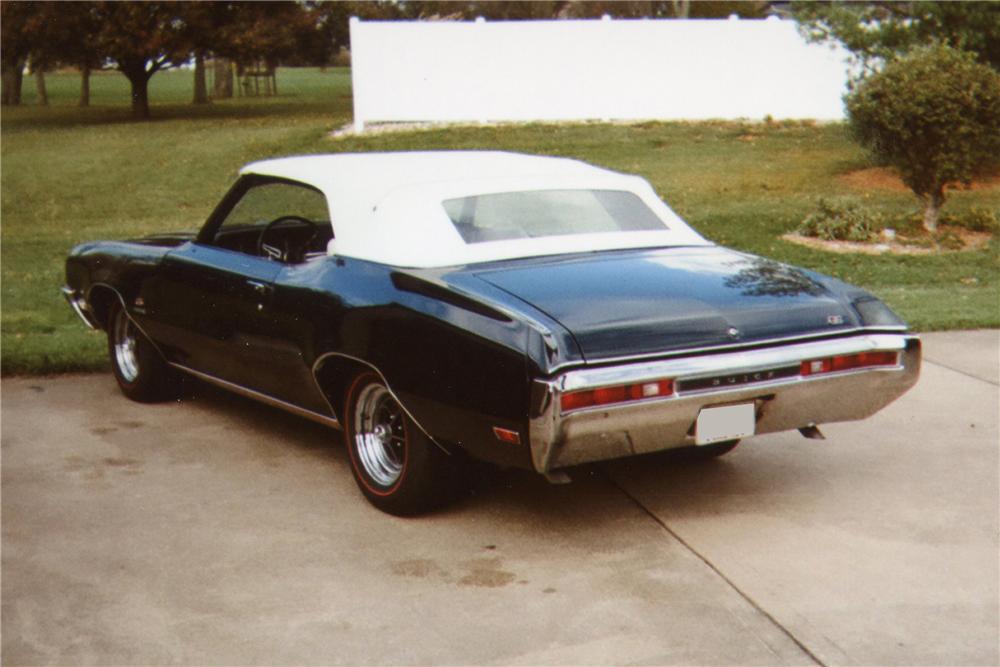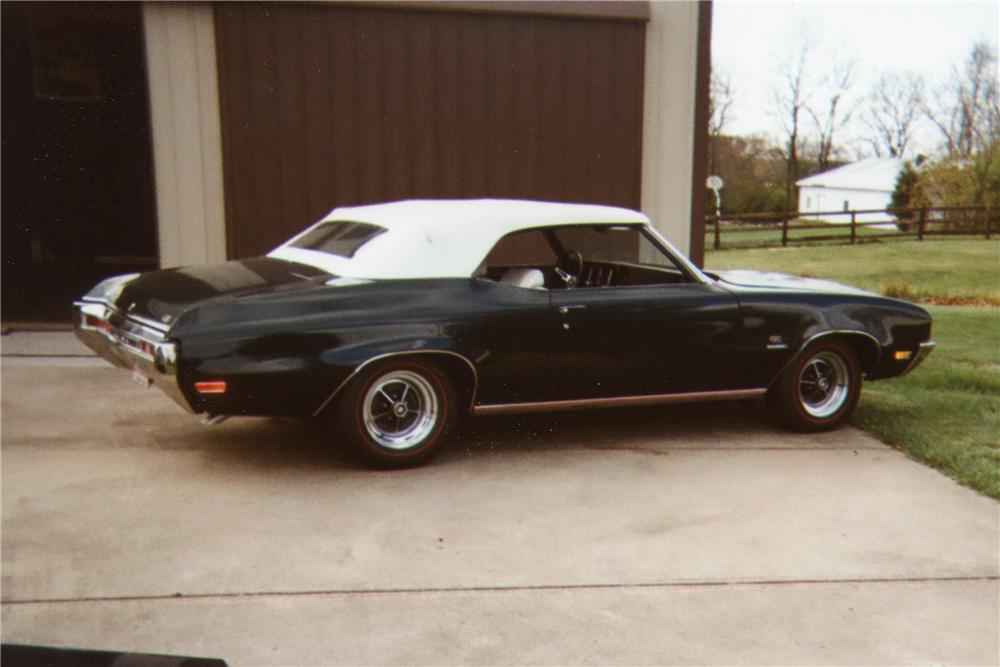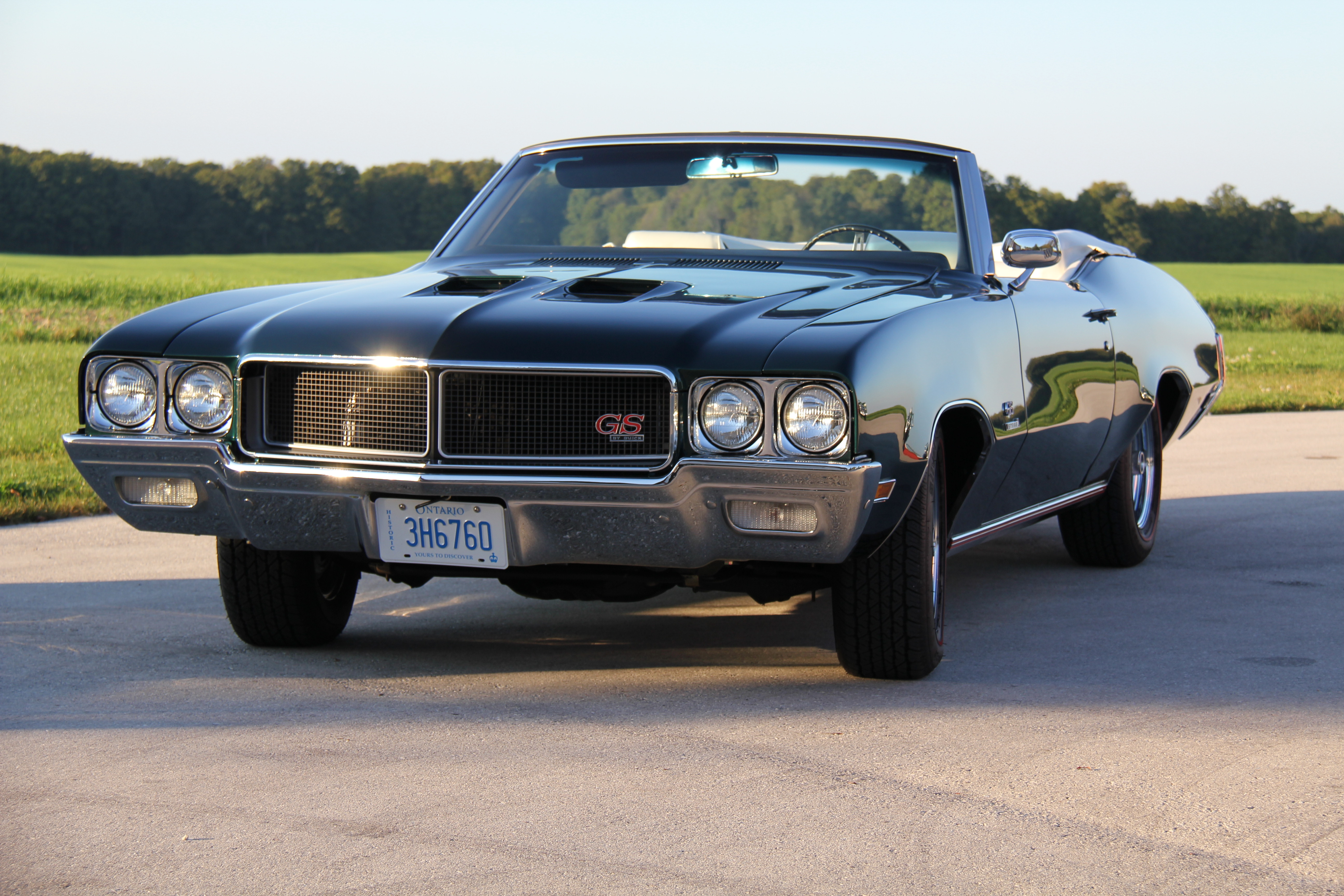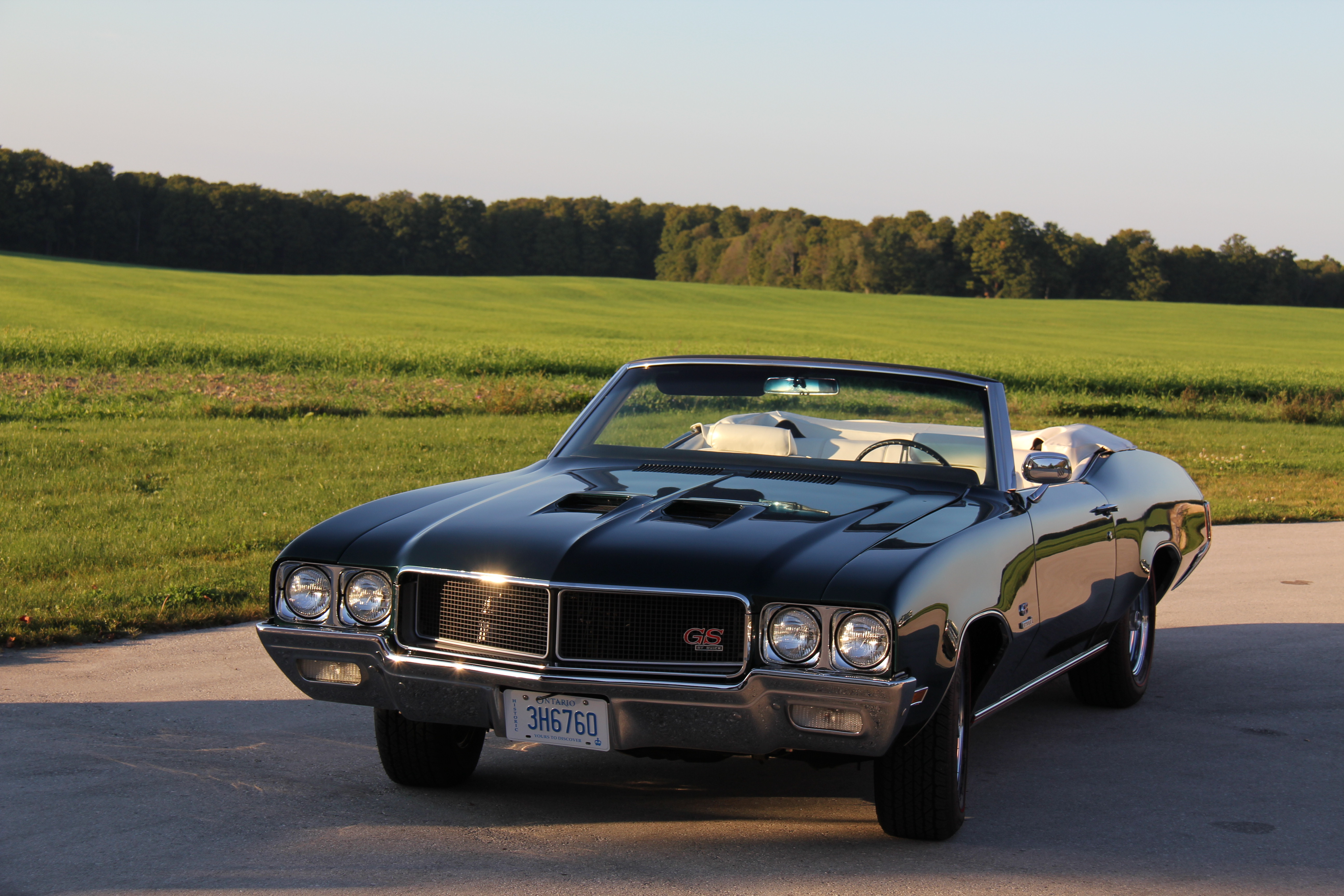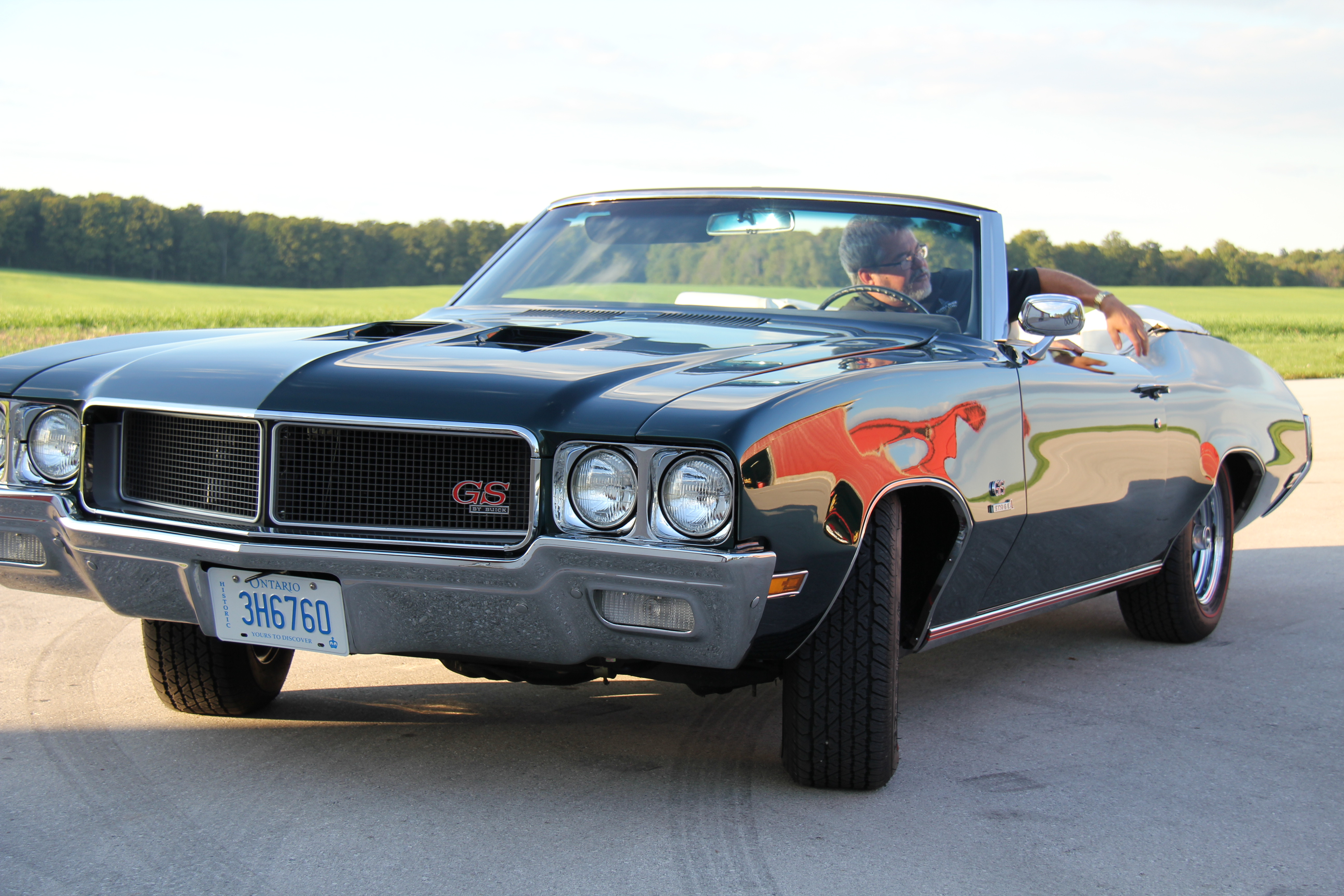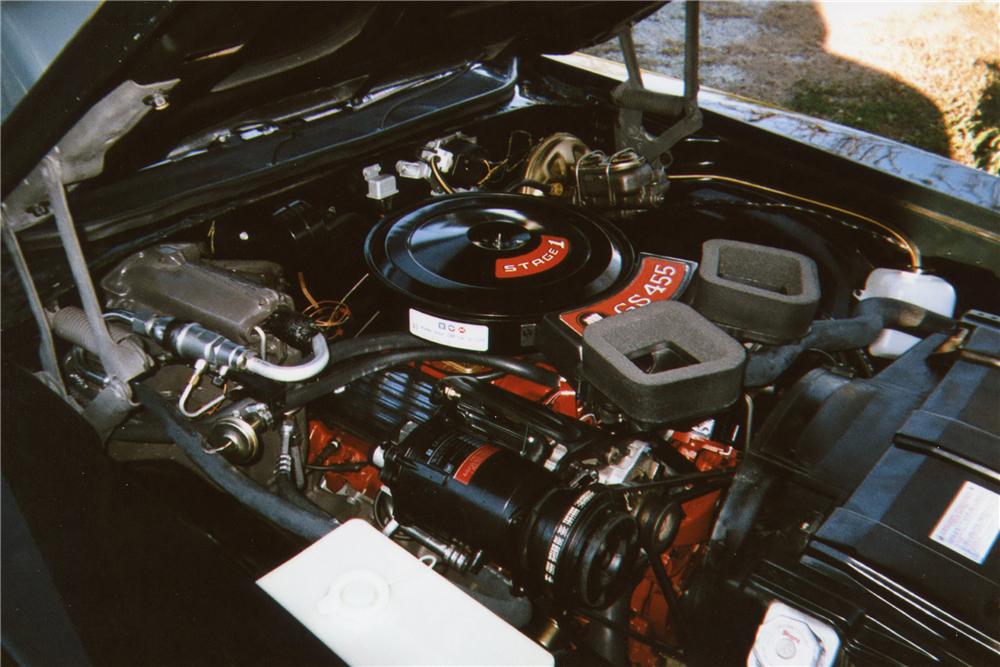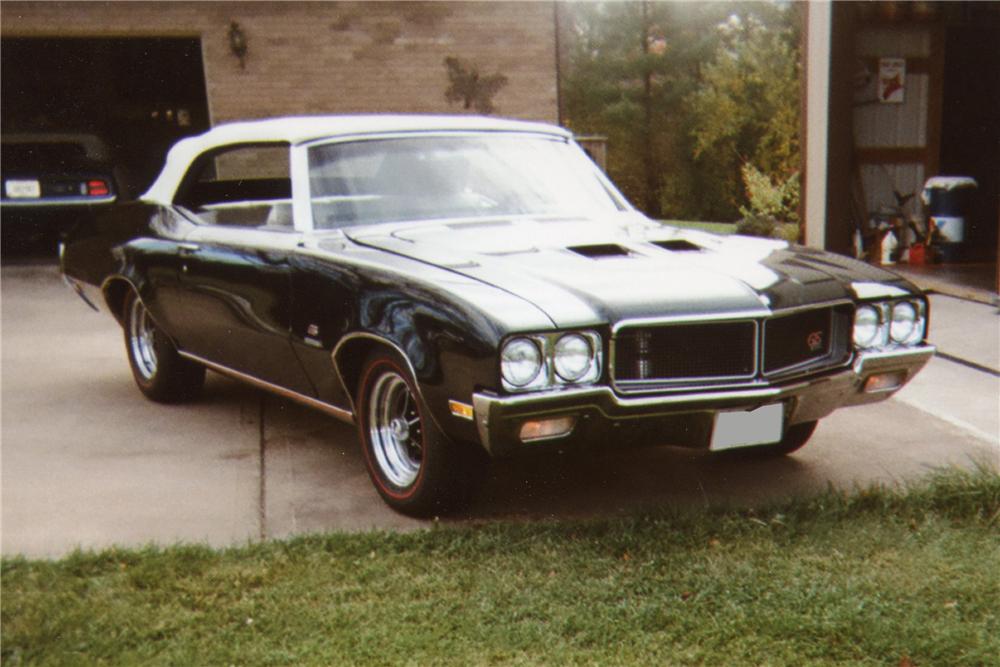1970 B UICK GS STAGE 1 NO 89
In 1970 General Motors finally allowed their Divisions to install the massive 455 cu. in. engine in mid-sized cars. Buick’s entry in this field became the GS455 and the GS455 Stage 1. The result is what many consider the fastest of the muscle cars with that touch of Buick luxury.
This is one of just 232 Stage 1 convertibles built by Buick in 1970.
455 CU IN with 510 FT Lbs Torque Automatic Trans Air Conditioning
Matching numbers drivetrain, factory GM Protect-O-Plate 29,500 original miles
Fresh frame-on restoration of a rust-free Texas car
The relatively unknown, very expensive, and very rare 1970 GS 455 Stage 1 drew a great amount of attention and controversy in the muscle-car world when in the 1980s it was listed as faster than any of the Chrysler Hemi cars in the original "50 fastest muscle cars" list. This Hemi vs. Stage 1 controversy has prompted several contests to settle the issue; it remains an unsettled matter and has been a great boon to car magazine sales over the years.
The Hemi Killer
In November 1984 “Popular Car Review (later Muscle Car review) released their list of the `Fifty Fastest Muscle cars.’ Top spot was a `66 427 Cobra, second was a 425 hp `67 427 Corvette and third place was a `70 Buick GS Stage 1…”
What! How was that possible? Faster than the Chevelle! Faster than the GTO’s! Faster than the Hemi!!!!
So, in response to this article a challenge was issued and in due time Popular and Performance Review invited prime examples of the two top contenders to Gainesville Raceway to settle this matter once and for all. Both cars arrived slightly modified with slicks, headers and blueprinted street cams. The GS was driven in while the Hemi came in by trailer. In the resulting race-off the Buick turned an outstanding time in the quarter mile of 12.30 versus the Hemi’s 13.03. The muscle car world was shaken!
So how did Buick develop this “Hemi Killer!”
As noted above, the GS 455 was built around their own Buick 455 cid engine. This engine was unique among the GM giants. As Hemmings Muscle Machines recounts: “The Buick version was really quite different . . . . in fact, the engine actually weighed close to 150 pounds less than the legendary 454 big block that Chevy used. This weight reduction compensated for slightly lower horsepower output from the Buick version. They rated the standard issue455 at 350 HP( with a mind boggling 510 ft lbs of torque) and the high performance Stage 1 version at 360 HP.”
The Stage 1 version of this remarkable engine “offered cylinder heads that followed the same pattern as the other Buick 455’s . . . (but) were matched differently in order to accept larger valves (2.13’ intake and 1.755’ exhaust), and to produce smaller compression chambers for increased static compression. . . the option also included a more aggressive camshaft, specially tuned 4-barrel Quadrajet carburetor. . . the magic of the Stage 1, it would seem was primarily attributable to its advanced (for the period) cylinder heads and the relatively high mid-range horsepower they produced.”
But the 1970 models marked the high water mark of that era of American Muscle. Subsequent government mandated emission restrictions began to rein in the roar. For instance, the reduced compression caused the GS 455 horsepower to go from 350 in 1970 to 315 in 1971.
But the memories go on and thanks to models preserved in museums like the Lang Collection we can still actually hear and feel the rumble of these high powered Legends of the Highway to this day.

